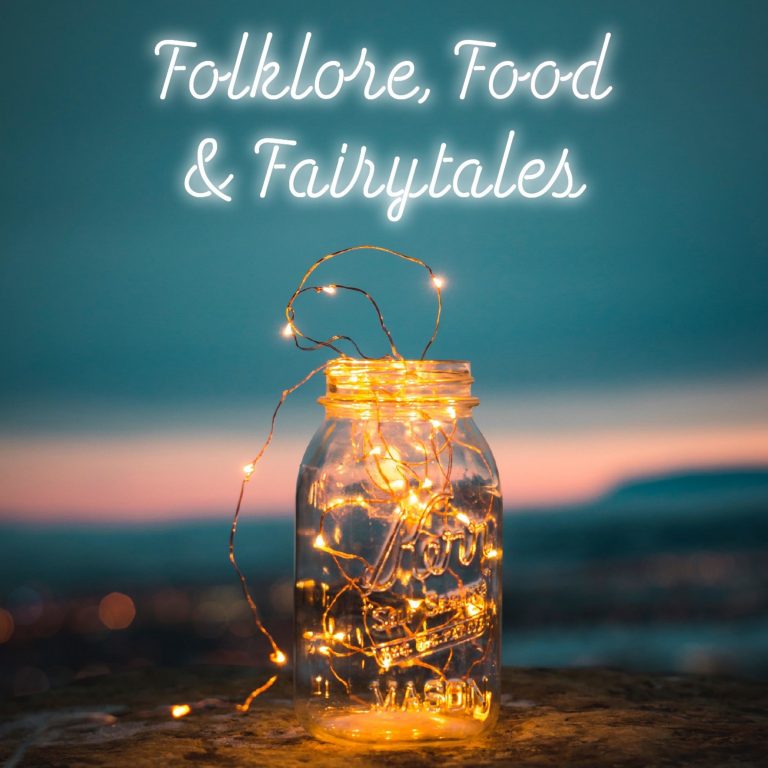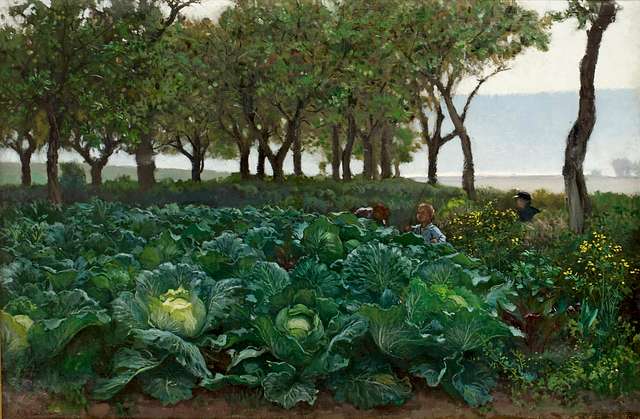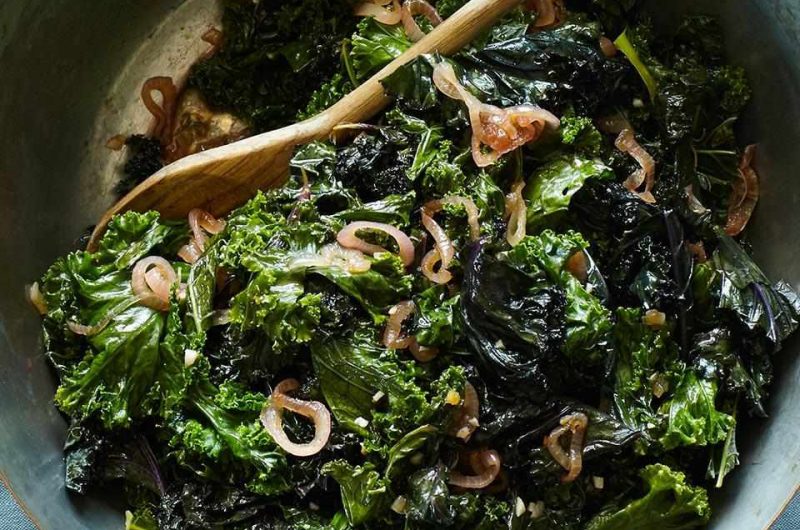In which we discover that strange food stealing horses don’t always have your best intentions at heart, that you should always be kind to cats and that kale has its very own folklore.
In which we discover that strange food stealing horses don't always have your best intentions at heart, that you should always be kind to cats, rowan is good for protection and that kale has its very own folklore.
The Story: The Widow & Her Daughters adapted from the version in Popular Tales of the Western Highlands collected by Joseph Campbell.
The Recipe: Wilted Kale
If you would like to find out more about what I talked about in this episode you can find books and links at Further Reading
You can find more about me and Folklore, Food and Fairytales via my Linktree
You can find the interviews in my newest interview series here: How Food Frames Stories. You can find my interviews with storytellers here: Vernacular Voices of the Storyteller
You can also subscribe here (or just read) my free newsletter for further snippets of folklore, history, stories, vintage recipes, herblore & the
occasional cocktail.
You can also find out more at Hestia's Kitchen which has all past episodes and the connected recipes on the blog.

Did you enjoy our tale? The tale is adapted from Joseph Campbell’s Popular Tales of the West Highlands as told to him by Mrs. MacGeachy a farmer’s wife from Islay in this instance. I’m not in the slightest bit ashamed to say that I changed the ending of the story when adapting it to one similar to that of nearly every similar tale of this type. I killed off our Bluebeard in the making, just as the other tales destroyed their ogres with sunshine or their giants with boiling water or bad princes with magical swords. I just borrowed the revengeful menfolk from “Bold but Not Too Bold” as they were sitting around with very little to do outside of their story.
I think this story might have two possible morals. The first dubious one is that women should do what they are told and then they won’t have their heads chopped off and put in a room. The second one which I much prefer is that you should always be kind and generous to cats, however as we now know possibly only in the form of lactose free or kitten milk not the standard cows.
I am writing this living with a cat who is miffed that I have not yet remedied the lack of heating in our house due to a broken boiler. I’m fully of the belief that all cats would be horrible bosses at work as they would always insist on ‘no excuses’. My excuse, which he is having none of ,is that if there is no engineer available then they can’t possibly fix it. I have tried explaining that vulnerable people should have their heating fixed first but sulks are still ensuing. He is insisting on more food to help him cope with the cold and as per the moral of this story, I have given in.
There is no explanation given for the cat in this story. It’s as if there has to be a helper and a cat just fitted the bill, if you were expecting him to turn into something else at the end, I apologise. I think there is a variation of the story which is classified as AT311 Rescued by a Sister, where the helper is actually a princess who is also trapped but stays in the form of a woman. In the majority of the stories, there is no helper at all and the youngest daughter is clever and thinks it out for herself. They don’t always have the Bluebeard story connection that this one does, although there is an Italian version where the bridegroom is actually the devil himself.
There are some very strange versions of this tale and I will leave you to find them out for yourself. My favourite one, other than this one, is the Norwegian variant which has an ogre and a hen and a very clever youngest sister. It doesn’t have the cat however, for whom I have a big soft spot. As well as the cat, I particularly enjoy the villain of the piece having to carry the heavy chests which contain things being taken from him as well as the last containing the reason for his downfall in the form of the youngest sister.
The folklore in the tale is really all about the protective qualities of the rowan or mountain ash. Admittedly that was usually against witches but it is also considered generally protective from most enchantment. People also believed the colour red was good protection against magic. Thus the rowan’s vibrant display of glorious red berries may have further contributed to its protective abilities. The rowan was also thought of as a Faerie tree by virtue of its white flowers. People carried pieces of the tree to ward off witchcraft and even used of rowan sprigs to protect cows and their crops from enchantment.
Cold iron was believed to repel, contain, or harm ghosts, fairies, witches, and other malevolent supernatural creatures. We are unsure whether col iron was just a poetical term for iron such as the more modern phrase ‘cold steel’ or whether it referred to wrought iron which requires a blacksmith to heat it and hammer it into shape and is mostly formed from elemental iron with just a small amount of slag added.
It is a much purer metal than cast iron which contains carbon and other trace metals as an alloy. Wrought iron is much more malleable than cast iron which is much harder but also more brittle. Cast iron doesn’t necessitate a blacksmith but you cannot call something true wrought iron unless a blacksmith is involved. I imagine we will never really know but with all the blacksmiths, miners and metal workers in my family I like the idea of a purer metal involving a blacksmith being needed for the protective quality to be present rather than just a turn of phrase.
You probably think I have forgotten that we usually discuss food in at around this point but I promise I haven’t forgotten even if our foodstuff is not a romantic or elegant ingredient. It is an incredibly useful one though. Brassica oleracea otherwise known as cabbage in all its many forms including cauliflower, Savoy cabbage, broccoli, kale, collard greens or even kohlrabi. We are going to stick to looking at cabbage and kale. All of these many varieties have been engineered by humans over thousands of years. No one was completely sure of where the original ancestor plant came from but from the most recent research it looks as though Brassica cretica, which originated from the eastern mediterranean, is the most likely culprit.
It is one of those vegetables that traveled around a lot coming from different directions so it was tricky to track down the source. The earliest mentions of recognisably cabbage type vegetables can be found in Greek literature dating from around 2500 years ago by the Ancient Greek botanist Theophrastus. Before reading about all of this I was not aware that plants could be both wild and feral. Feral in this case meaning derived from cultivated plants returning back to wild rather than starting out in the wild. I had associated it mostly with cats, particularly the one in my house who has a tendency to occasional bouts of distinctly feral behaviour even though he was born in a semi-detached, slightly north of Wolverhampton and has never even been outside when not in a cat basket.
Anyway back to cabbages and kale. These grew well in poor soil in small plots in Scotland due to their ease of growth in places where other plants wouldn’t even wave a saddened leaf. This explains why they are present in our story to indicate the poverty of the widow and her daughters and why they would try and prevent further hardship by seeing off the horse that was eating their food. They even have a place in Halloween folklore in Scotland, although very rarely practiced now. This sadly neglected way of finding out the size, figure and disposition of a future spouse was by pulling cabbages or Kale plants up blindfolded under the moonlight of All Hallow’s Eve.
The size/shape of the cabbage or kale was indicative of whether they would be plump or slender, tall or short. If any dirt clung to the roots they would come with money and whether the heart of the stem was bitter or sweet would indicate the degree of their good temperedness. The leaves were then balanced over doorways and the christian name of the person who caused them to be disturbed would be the same as your future beloved.
We should probably pop back to Ancient Greece and Rome first to find out what they thought of the origins of this interesting species: The Romans did not deify the cabbage, but they did give it a divine origin. They claimed that Jupiter, the father of all their gods, was attempting to explain two contradictory oracles. He worked so hard that perspiration came out on his brow and, as the drops fell to earth, they turned into tiny cabbage plants. Curiously enough, Ancient Greek mythology also gives a watery origin to the cabbage.
The story goes that Lycurgus, a prince of Thrace, destroyed all the grapevines in Dionysus’ garden. Dionysus when he saw the damage to his garden, was a very angry God of Wine. Lycurgus was brought before him and condemned to be bound to a grapevine for the rest of his life. As Lycurgus wept, lamenting his lost liberty, his tears took root and tiny cabbage plants came up. Several hundred years later a reflection of this legend was found in a belief, widely held by both Greeks and Romans, that eating cabbage would cure drunkeness. The cabbage, having sprung from Lycurgus’ tears, was the enemy of the vine, of which Dionysus was the God.
It is certainly never fermented for its alcoholic properties although it does make it an excellent ingredient for fermentation in sauerkraut which enabled cabbage to be kept for the few months of the year in Northern Europe where conditions were not conducive to its cellar storage. It was easy to grow and store, kept their families fed and meant that farmers could concentrate on other crops that could be sold at higher prices or used to ferment into alcohol, like grain. In the early medieval period in England, February was even known as Sprout-kale before we took on different names for the months .
Cabbage is also connected with fertility and was eaten by women to increase the chances of a good pregnancy and boost fertility. It is even used, with some scientific proof of its effectiveness, to receive some of the pain of engorged breasts caused by breast feeding. Scottish children used to leave cabbage leaves outside their homes so that they would gain a sibling.
Some people considered them to be full of imps and demons. In Gregory the Great’s Life of Benedict, Vol. 2, there is a story about a nun who became violently ill after eating a cabbage which she had not blessed. The Saint was called on to expel the demon that had possessed the nun, and according to one version of this story, the demon then complained that he was just minding his own business and sitting on the cabbage when the nun came along and ate him!
There were also a lot of folk medicines derived from Brassica oleracea varieties which were used to treat many conditions , different varieties were said to have different levels of power. It was considered to be good for the following: improving digestion or for colic, and an excellent laxative, curing sores, boils and even dislocations. It was thought to cure headaches and pain in the eyes and was good crushed and used as a poultice. Apparently the most effective of all was the warmed-up urine of someone who regularly ate cabbage and was considered an excellent fluid for bathing babies, thankfully no longer!
That’s it for folklore really but just before I share our recipe I just wanted to mention a particular variety of Kale once grown on Jersey because it was fascinating. This variety called brassica oleraica longata, a cabbage brought from La Vendée, was known as ‘Long Jack’ because of its 10-12ft stalks. It not only provided cattle feed but the leaves were used for wrapping the rich, yellow jersey butter for market, and a traditional loaf the Jersey cabbage loaf- -was baked wrapped in them. The stalks also made strong, lightweight walking-sticks, once much sought after but sadly not so much now. Imagine a kale field you could get lost in or kale mazes. The folk horror implications are endless.
So now to our recipe :Wilted Kale adapted from Six Seasons, a New Way with Vegetables by Joshua McFadden with Martha Holmberg. It’s essentially a slightly sweet, slightly sharp, slightly hot dish and tastes amazing whilst making you feel virtuous because of the sheer amount of delicious greens you are putting away. I serve this with lots of things, especially alongside a rich pasta dish in the winter when decent salad is hard to find. It’s fabulous alongside sweeter roasted squashes for colour and to add some depth to the sweetness. It’s perfect with a roasted, collapsing sweet potato stuffed with goats cheese or feta. It can even make a chicken breast perk up.
Wilted Kale
4
servings15
minutes15
minutesIngredients
3 tablespoons white wine vinegar
50g sultanas
Extra-virgin olive oil
1 garlic clove, smashed and peeled
500 g kale (preferably broad leafed like Cavolo Nero but even curly works here), thick ribs cut out, leaves torn into big pieces,
sea salt and freshly ground black pepper
¼ teaspoon dried chilli flakes
Directions
- Put the vinegar and raisins in a little bowl and let the raisins plump for 1 hour.
- Heat 4 tblsp olive oil in a large deep frying pan over medium heat. Add the garlic and cook slowly to toast the garlic so it’s very soft, fragrant, and nicely golden brown—but not burnt—about 5 minutes.
- Add the kale leaves to the pan; if they won’t all fit at once, just add a few handfuls and toss them with tongs until they’re wilted, and then add the rest. Season with salt and black pepper, add a splash of water, and cover the pan.
- Cook over medium heat until the kale is tender, 8 to 10 minutes. If there is a lot of liquid in the pan at this point, uncover the pan, increase the heat, and boil most of it off. Add the raisins and vinegar and chilli flakes and toss well.
- Taste. Remove from the heat, pour in a healthy glug of olive oil, and let the kale cool. This is best served 1 to 2 hours later. It’s also fine to make a day ahead; just be sure to bring it to room temperature.
Further Reading
Cabbage, A Global History – Meg Muckenhoupt
Popular Tales of the West Highlands – Joseph Campbell
https://www.reliance-foundry.com/blog/difference-cast-iron-wrought
https://www.atlasobscura.com/articles/jersey-kale
jersey cabbage loaf – Google Search
https://sacred-texts.com/neu/celt/pt2/pt233.htm
https://www.smithsonianmag.com/arts-culture/the-halloween-tradition-best-left-dead-kale-as-matchmaker-100207686/
https://medium.com/@freshlight-money/the-history-of-kale-c57614f5f162
The mother of all sprouts – New Scientist 17/24 December 2022
Featured Image: August Malmström – Lekande barn i trädgårdsland


